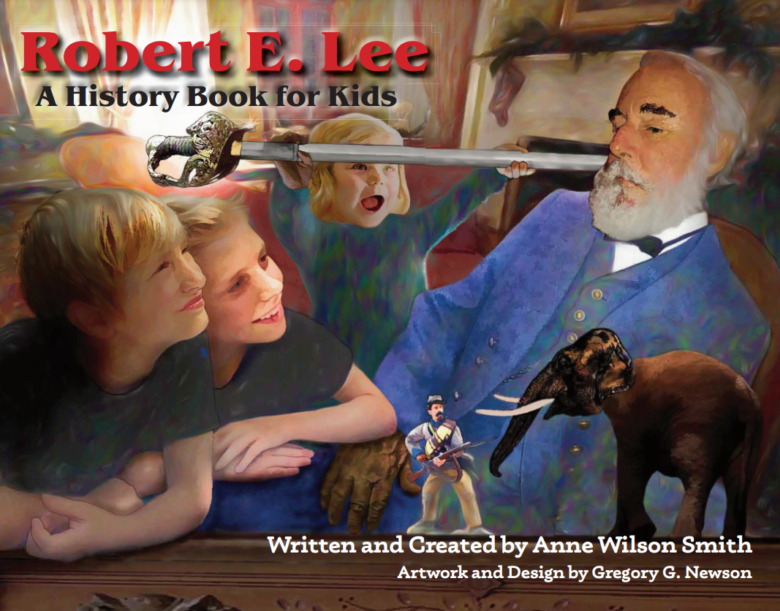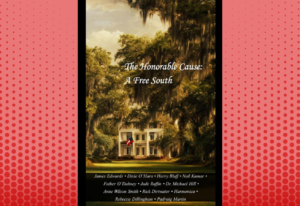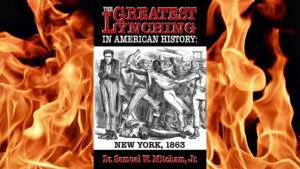Robert E. Lee wanted to make “the struggling Washington College [now Washington & Lee University] … a place for young Southerners to learn and to become good citizens,” wrote Anne Wilson Smith in her new book, “Robert E. Lee: A History Book for Kids.”
Yet, real education and civic responsibility are under attack like never before. Lee embodied those traits, which is why he’s smack dab in the cultural-Marxist cross hairs. That is precisely why Smith’s work is so essential; it is both timely and timeless.
Timely because the assault on General Lee the man is so palpable that you could cut it with a hammer and sickle. W&L scalawags and colonizers wanting to remove Lee’s name from the college where he nobly served as president after the War Between the States is but one example of the continued reconstruction and devolution of the Southern spirit.
Others include the removal of Lee’s statues from public spaces in New Orleans to Dallas to Durham, renaming schools and streets and highways chosen to honor him, razing of his memorials in both the US and Virginia capitols, and possibly striking his name from Arlington House (the Lee family home, whose image may even be taken from the Arlington County seal since it’s deemed by some as a “symbol of slavery”). Cultural genocide is on the march, and Smith’s book is a necessary counteroffensive.
It’s also timeless because Lee the symbol actually is some thing – something tangible, something real, something eternal. I mean, what could be anymore vital a topic than home? It’s the same thing that we Southerners fight for today and yesterday. Nothing has changed. And nothing could be more relevant than resisting invaders, thieves, and tyrants and trying to protect your people. These are subjects that even children can understand.
As Smith’s bio rightly states, the “fair treatment of Southern history, especially the Confederate era, can instill pride and a natural affection in Southern youth for their ancestors and affirm their sense of identity.” This is why government schools foster self-hatred among Southern youth, but Southernness as represented in Lee is about love and hope.
After all, Lee’s cause is not a lost one at all. This is why the reprobates don’t want boys and girls to know about the intellect, courage, faith, and loyalty that he embodied. They don’t want young people, who are inquisitive by nature, to ask questions about the fascinating life of the famous soldier.
Smith wants kids to ask.
The social-justice scoundrels are scared that when presented with the true story of Lee’s hardship and humility, children even in our postmodern era will intuitively recognize that he is a role model who should be emulated, not a traitor or a monster who should be erased from our collective consciousness. They’re scared that Lee’s gentlemanly ethos, masculine honor, and virtuous soldiering will spark something in our youth, especially boys, who are so desperate for real heroes, not “covid warriors.”
Smith’s not scared. She wants kids to know. She wants them to think and to be proud.
The first-time-published author pulls off that arduous task with aplomb. In the 32-page full-color book, Smith rejects the deep-seated indoctrination of the Northern school-teacher intelligentsia and simply but boldly proclaims that Lee is admirable in both character and ability. This was a given, 50, heck, even 15 years ago. But today, that kind of unapologetic discourse is revolutionary.
Of course, even the most compelling subject’s tale cannot be conveyed without an engaging narrative. Smith breathes fresh life into the story that many battle-worn rebels can recite from memory. But even they can become complacent to the human behind the grand saga.
So Smith includes some not oft-talked-about gems, such as Lee as army engineer, brave captain in the Mexican War, superintendent at West Point, and grantor of amnesty to Nellie the chicken. Her punchy, propitious prose threads the needle of a tapestry that is both past and present.
The illustrations, created by artist Gregory G. Newson, accentuate this theme of the permanence and progress of Lee’s story. The bright and captivating images blend old and new, and reinforce the ideas that sacrifice and self-determination, loyalty and leadership, duty and diligence never go out of style.
Honor like Lee’s is not a given and must not be taken for granted. It’s an inheritance that must be passed down, just as Smith’s father, historian Dr. Clyde N. Wilson, taught her. This is probably why she so effectively conveys the concept to readers young and old.
While Lee’s charge was to defend his land and his people, ours is to impart that history to our children. By keeping alive those memories, we can counter the anti-Southern hatred and transmit to boys and girls an understanding for what it was that Confederates courageously battled: independence. This tact is simultaneously a good defense and a good offense.
As history is torn down all around us, Smith’s work builds up and builds upon the moral framework of a great Virginian, a true American. This beautiful little book is a big reminder that we can all learn from Lee and must train up the smart citizens and heroes of tomorrow.
“Robert E. Lee: A History Book for Kids,” by Anne Wilson Smith, produced in the Republic of South Carolina by Shotwell Publishing, $19.95.






Comments
Thanks. Never forget!!!!
Author
Thank you, good sir! 🙂